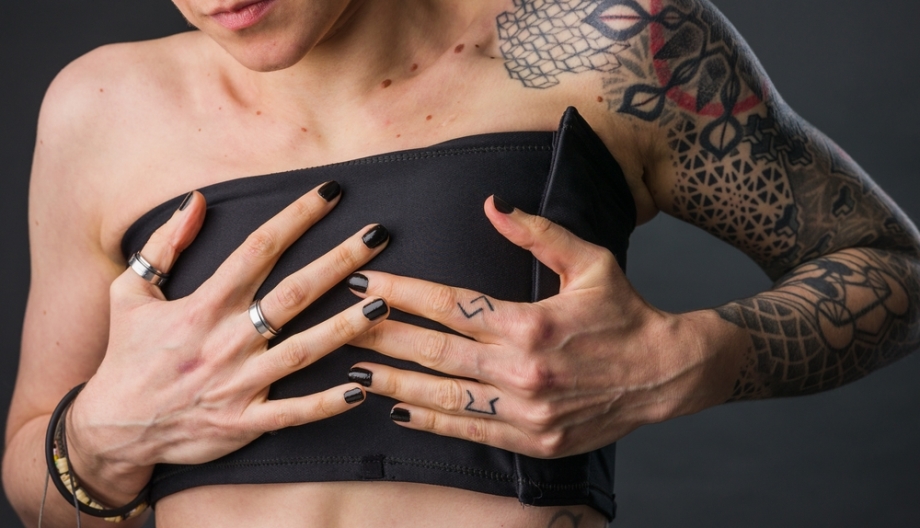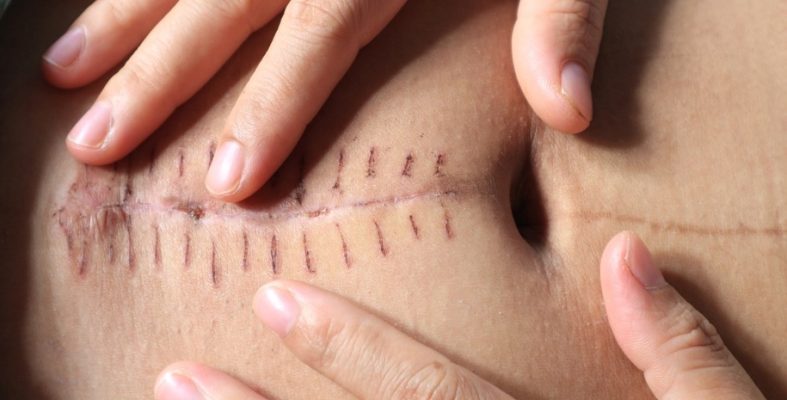
Chest Binding, also called Breast Binding, is typically thought of as a gender-affirming practice used to compress or flatten chest tissue (usually the breasts) to make a person’s chest look flatter.

Even though Chest Binding can help people of any gender to feel more comfortable with the way they look, it’s commonly used by transgender people (although non-binary or gender fluid people may also practice it) to have a more male-like or more neutral chest appearance. It could be used as a structural solution, but it could also be a step in a female-to-male transition.
Nevertheless, Chest Binding is not necessarily only gender diverse people. It may also be practiced for completely other reasons by all genders, such as for cosplay, drag, aesthetic preference, sports, comfort, to conceal obesity, or as a help with healing after surgery.
Chest Binding is carried out with a so-called Chest Binder (also called Trans Binder, FtM Binder, Binder Bra, or Breast Binder), which is a tight-fitting piece of clothing material characteristically applied to the upper body. Binders can be classified roughly into fabric binders, tape binders (kinetic tape or medical tape), sports bras, and compression shirts.
They may be used to only cover the chest area, but there are that cover the body until the waist. Some are used under other clothing, others as outer clothing, some come with zippers and other with clasps, or laces, and again other stretch and others don’t. They can be obtained in many different styles and colors, made of all kinds of fabric.

Chest binders are generally safe to use when they fit well, but there are some health risks involved. These risks may include breast, back, shoulder and/or abdominal pains, postural changes, skin irritation or skin infection, scarring, swelling, tenderness or oversensitivity of the area, difficulty with breathing, headaches, dizziness, fluid build-up in the lungs, bruises or fractures of ribs, digestive issues, fatigue, and/or overheating. Hence, it’s very important to choose the best Chest Binder type and size for a given person to make sure to avoid complications.
In general, it’s recommended to not wear a Chest Binder more than eight to ten hours per day (and to take it off at night). In situations where it’s needed to wear it longer it’s advised to take a break and take off the binder for a few minutes (in a bathroom or other private location) to breathe deeply, give space to the chest, massage the chest tissues and muscles, and stretch the chest and back muscles.
In addition, it’s advised to take at least one day per week off from Chest Binding (the more days off the better in order to avoid health complications). Another important recommendation is to keep a binder clean by washing it regularly, which can avoid itching, rashes, and/or skin infections.

















